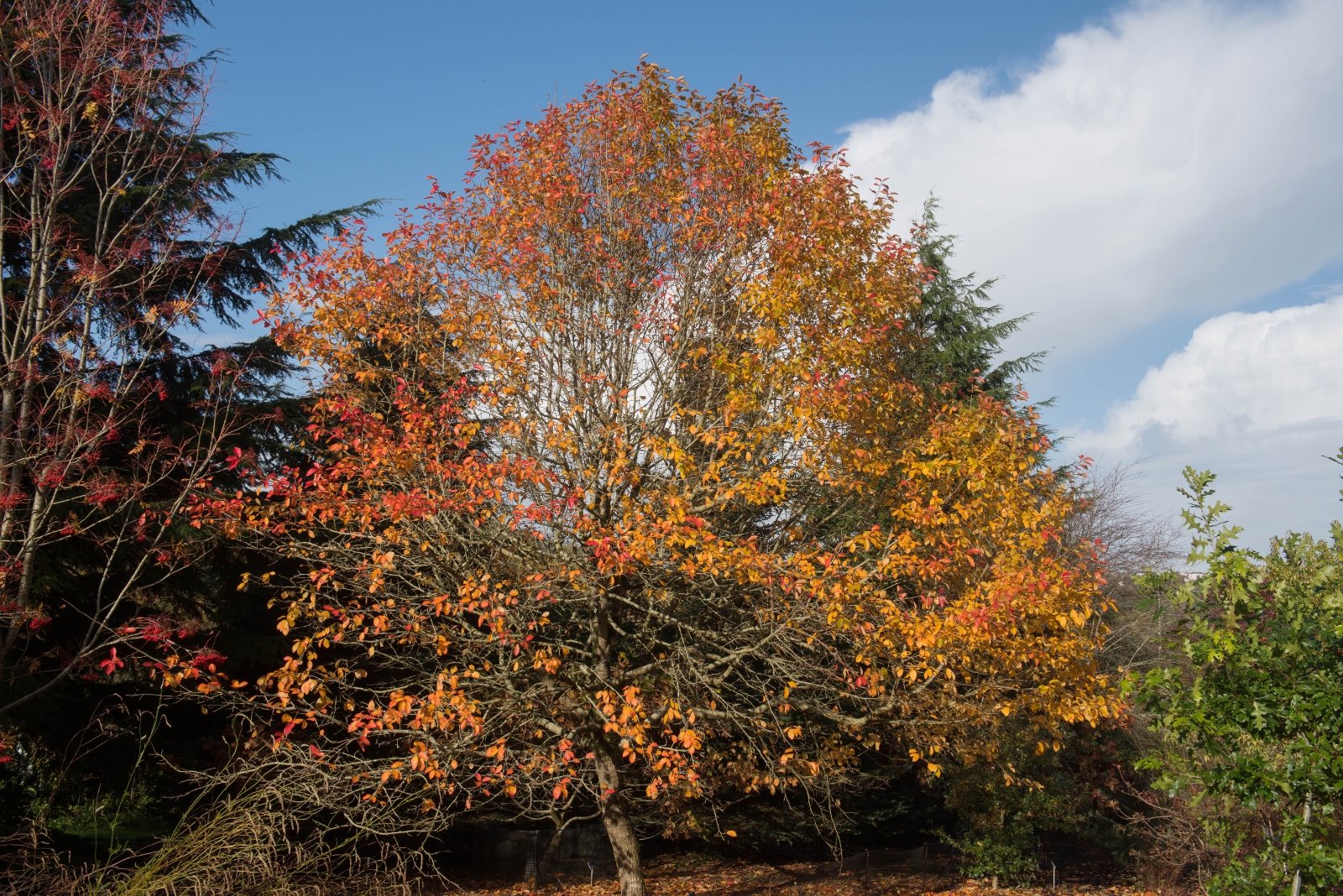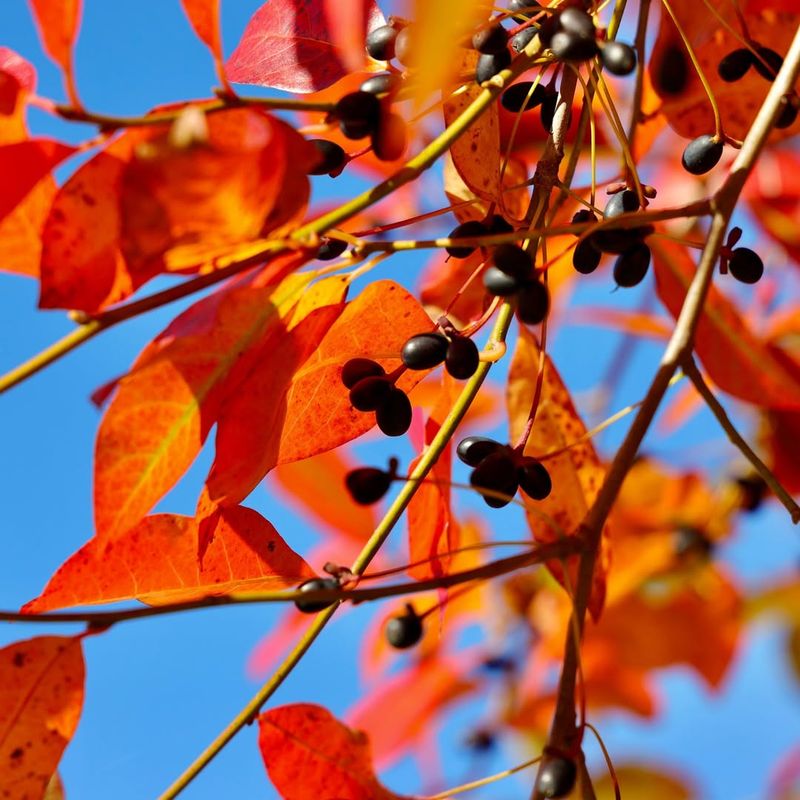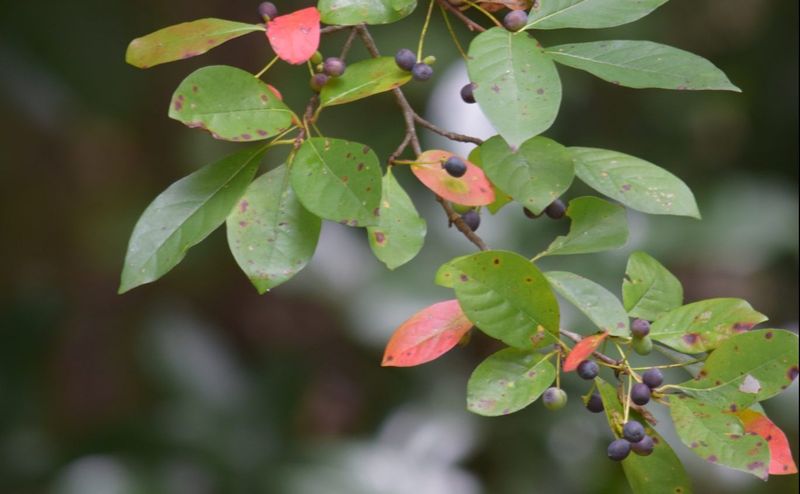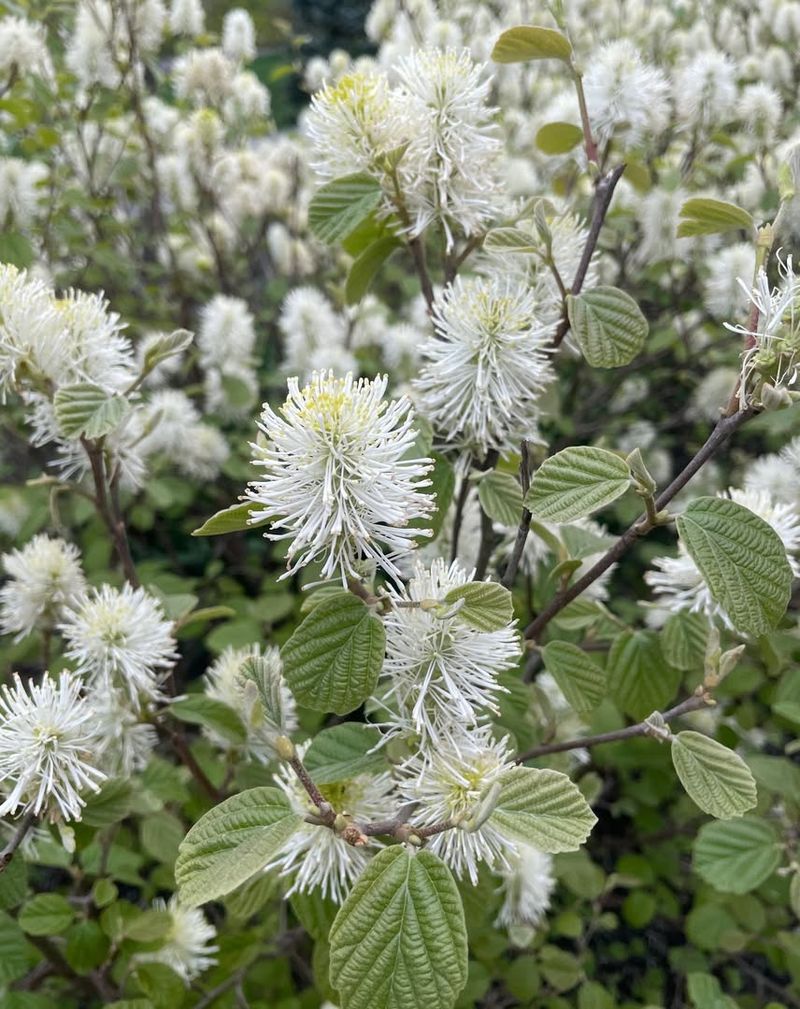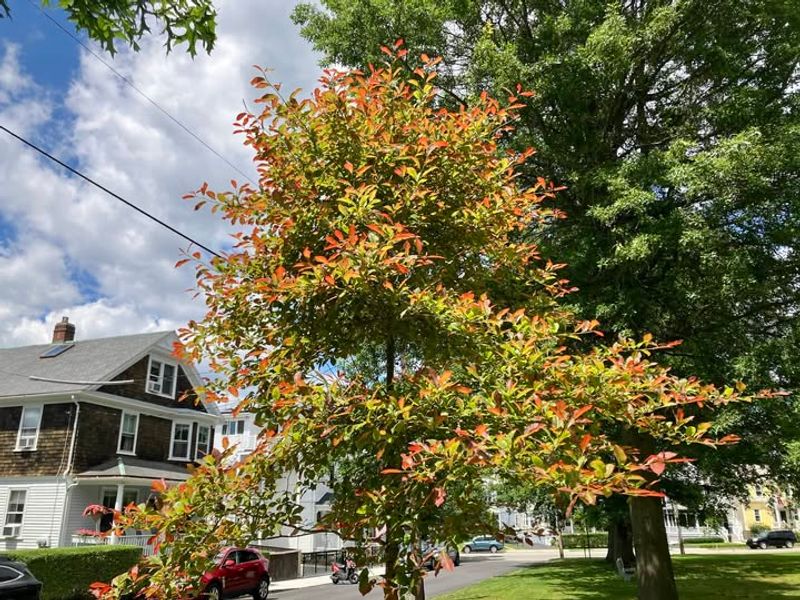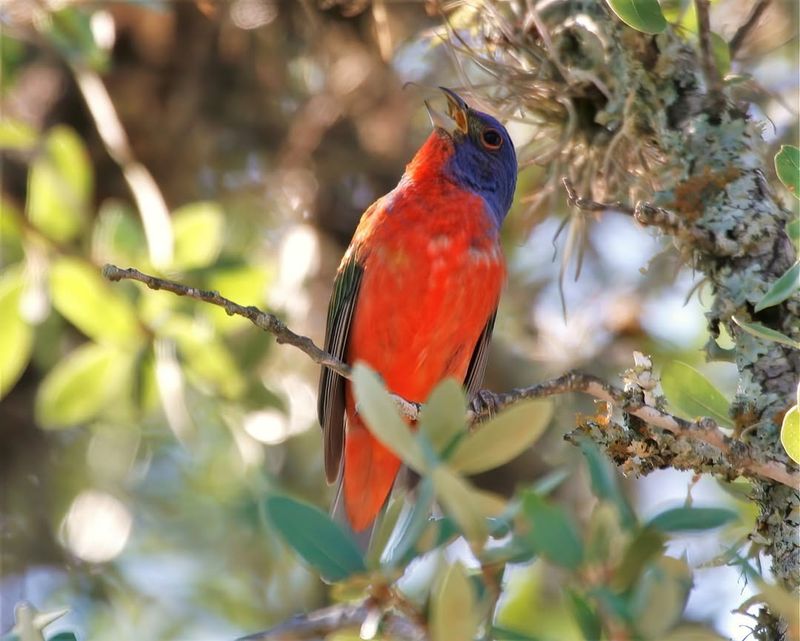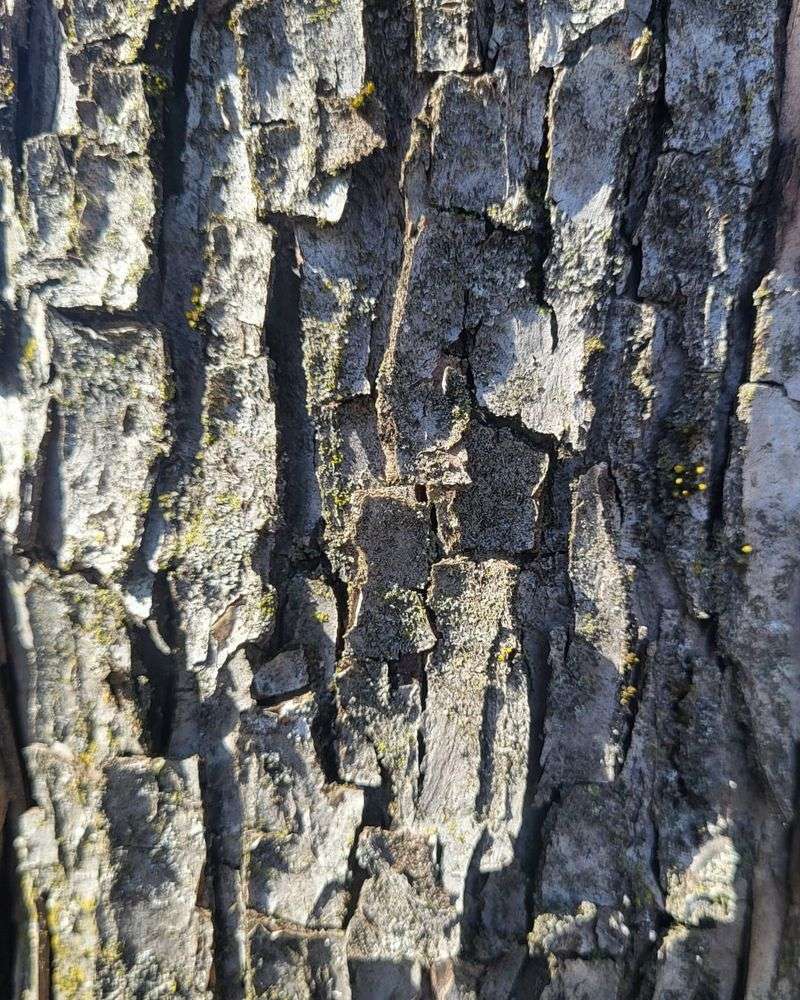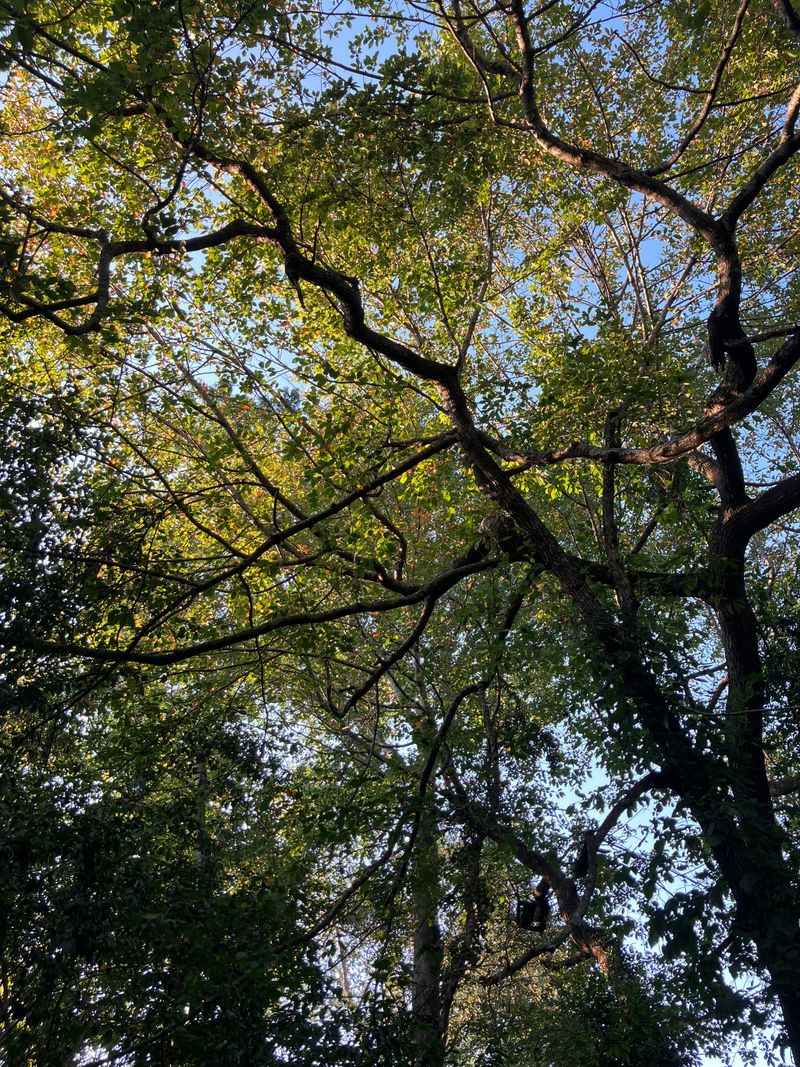When fall sweeps through Delaware, not every tree just fades and falls — some burst into life in a whole new way.
As blooms give way to berries and color deepens with the chill, one native beauty turns into a buffet for buzzing bees and fluttering birds alike. That showstopper? The brilliant black tupelo tree.
1. Brilliant Fall Foliage Signals October’s Arrival
When October rolls around, black tupelo trees put on one of nature’s most stunning shows. Their leaves burst into brilliant shades of red, orange, yellow, and even deep purple, creating a spectacular display that signals autumn has truly arrived.
What makes this transformation extra special is that it often happens earlier than other trees. Each leaf can show multiple colors at once, making the tree look like it’s been painted by an artist’s brush.
Delaware gardeners treasure these trees because they bring reliable autumn beauty year after year.
2. Small Blue Berries Attract Hungry Birds
Black tupelo produces small, dark blue berries that ripen perfectly in October, just when migrating birds need them most. Wood thrushes, robins, and cedar waxwings flock to these trees for the nutritious fruit that helps fuel their long journeys south.
Each berry might be tiny, but it packs serious energy for traveling birds. More than 30 different bird species have been spotted munching on tupelo berries throughout the fall season.
Planting one in your Delaware garden creates a natural bird-feeding station that requires zero maintenance from you.
3. Late-Blooming Flowers Feed October Bees
While black tupelo actually blooms in spring, its reputation as a bee haven extends through October because of its overall value to pollinators. The early flowers provide crucial nectar when bees are building their colonies, and the tree’s structure offers shelter even in fall.
Beekeepers consider black tupelo honey among the finest available, with a unique flavor that’s hard to match. Native bees also depend on these trees throughout the growing season.
By October, the tree still serves bees by offering protected spaces in its bark and branches.
4. Grows Perfectly in Delaware’s Climate
Delaware’s weather suits black tupelo trees wonderfully, making them an ideal choice for local gardens. They handle both wet and moderately dry soil, adapt to different light conditions, and survive cold winters without any trouble.
Native to the eastern United States, these trees have evolved alongside Delaware’s climate patterns for thousands of years. They rarely suffer from diseases or pest problems that plague non-native species.
Gardeners appreciate that black tupelo doesn’t require constant attention or special care once it’s established in the landscape.
5. Provides Year-Round Wildlife Habitat
Beyond October’s busy activity, black tupelo serves as a wildlife apartment building all year long. Birds nest in its branches during spring, squirrels cache food in its crevices during summer, and insects find shelter in its textured bark throughout winter.
The tree’s branching pattern creates perfect hiding spots for small creatures seeking safety from predators. Cavity-nesting birds particularly love older tupelo trees that develop natural hollows.
Creating a thriving backyard ecosystem becomes much easier when you include this versatile native tree in your plans.
6. Recognizable by Its Unique Bark and Shape
Identifying black tupelo becomes easy once you know what to look for in the bark and overall shape. Mature trees develop distinctive bark that looks like alligator skin, with deep furrows creating rectangular blocks across the trunk.
The tree typically grows with a pyramidal shape when young, then develops a more irregular, character-filled crown as it ages. Horizontal branches often create interesting patterns that make the tree attractive even without leaves.
Many Delaware residents can spot their neighborhood tupelo trees from blocks away once they learn these telltale features.
7. October Activity Peaks Before Winter
October represents the grand finale of black tupelo’s annual wildlife show, when everything comes together spectacularly. Migrating birds arrive in waves to feast on berries, resident animals gather food to store, and the brilliant foliage creates a stunning backdrop for all this activity.
Watching a tupelo tree during this month feels like observing nature’s busiest intersection. Early morning and late afternoon bring the most action as creatures rush to prepare for winter’s approach.
Delaware gardeners often position benches near their tupelo trees specifically to enjoy October’s natural entertainment.

